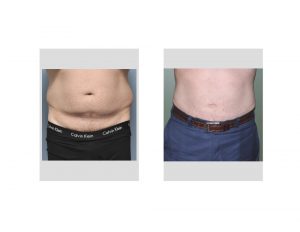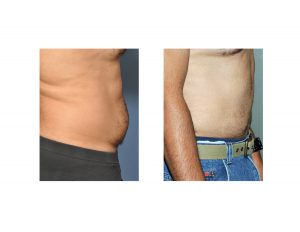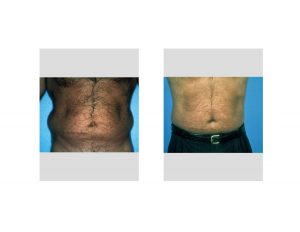Liposuction
Liposuction & Smartlipo in Carmel, IN
Dr. Barry Eppley has helped many liposuction patients eliminate unwanted fat deposits in various parts of the body. He uses every known fat reduction technique available, including SmartLipo, Power-Assisted Liposuction and injectable LipoDissolve, to help his patients achieve rewarding results.
LIPOSUCTION – What It Can And Can Not Do
No single plastic surgery procedure in the past 25 years has captured the attention and imagination of the public more than that of liposuction. It has been claimed to result in miracle cures from the ravages of obesity. Unfortunately, such perceptions and promotions have done much to mislead the public from an otherwise remarkable surgical technique.
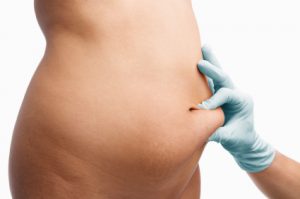 While diet, exercise, and the judicious selection of clothing styles can do much to improve the appearance of one’s body, many are faced with unsightly bulges that are resistant to removal by these conventional measures. In women, these areas are usually at the hips, buttocks, and thighs (a.k.a., saddlebags). In men, they occur higher at the waist and flanks (a.k.a., love handles).
While diet, exercise, and the judicious selection of clothing styles can do much to improve the appearance of one’s body, many are faced with unsightly bulges that are resistant to removal by these conventional measures. In women, these areas are usually at the hips, buttocks, and thighs (a.k.a., saddlebags). In men, they occur higher at the waist and flanks (a.k.a., love handles).
In the early 1980s, the procedure of liposuction was introduced to deal with these unsightly fat bulges. This procedure can effectively and safely remove excess fat cells from the body and can be done alone or with a wide variety of other plastic surgical procedures. It should be recognized that this surgical technique is not a treatment for obesity or weight loss but is intended for those patients with specific localized areas of fat that is resistant to exercise, dieting, and other methods of weight loss.
FAT REMOVAL WITH LIPOSUCTION IS SURGERY
Patients understandably are searching for a fat removal method that is ‘non-surgical’, noninvasive, has a quick recovery, costs less and will produce a permanent result. While these are all laudable body contouring goals, most of them are not realistic (as of today) and any perception otherwise is grossly inaccurate. To get fat out of your body quickly and as fast as possible requires liposuction surgery. Regardless of whether liposuction is done in the office or in the operating room or done awake under local or under general anesthesia, it is an invasive procedure that should not be confused with such marketing terms as ‘lunchtime lipo’, ‘ticklelipo’ or ‘featherlipo’. Such terms, and many other, imply that it is not surgery and not highly invasive…and nothing could be further from the truth.
LIPOSUCTION AND THE IMPORTANCE OF SKIN ELASTICITY
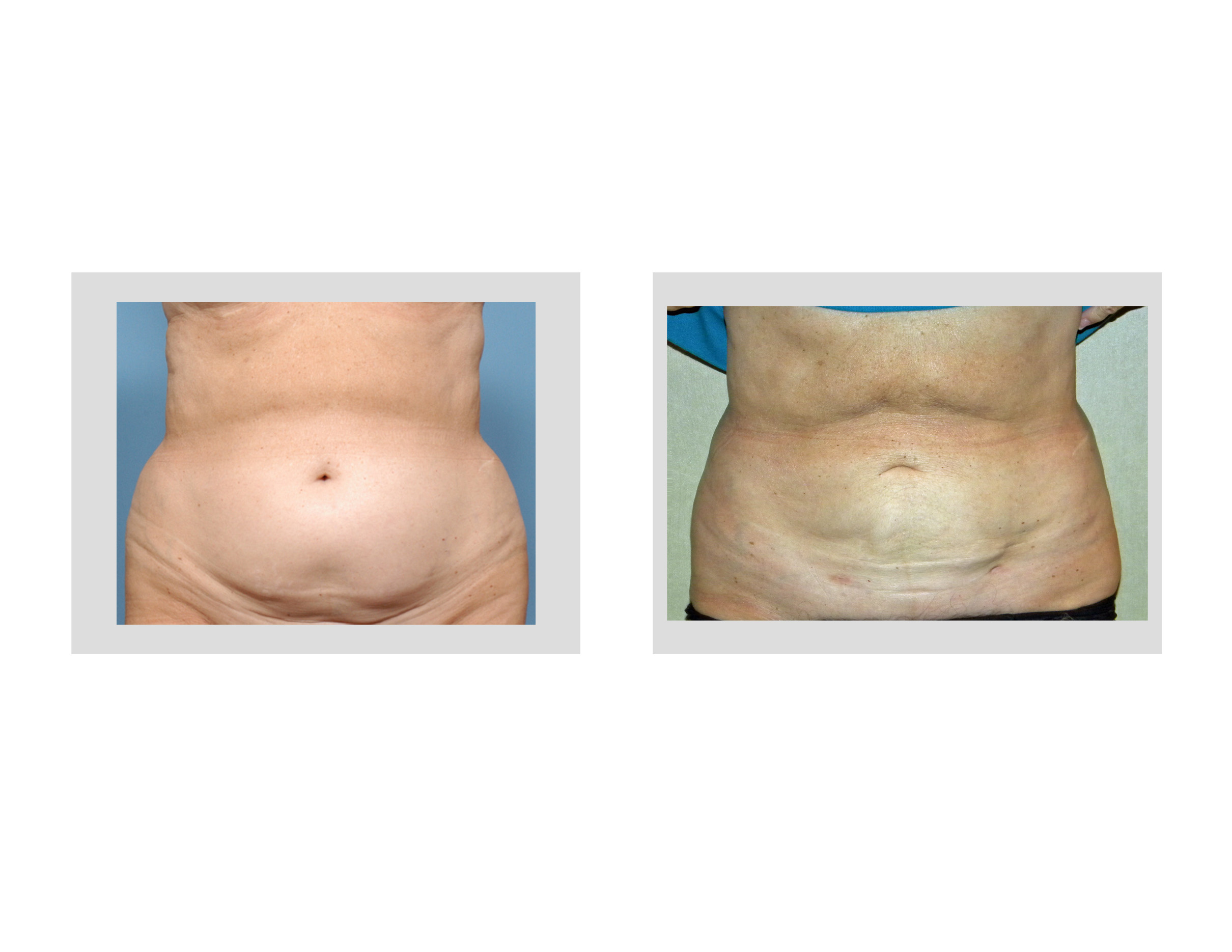 While liposuction can very effectively remove fat from just about any body area, a successful result is highly influenced by the quality of the skin overlying the fat area which is being treated. Since less skin is needed after fat is removed from underneath it, the skin must shrink and contract down to the new shape of the fat underneath it. Skin that does not have good elasticity due to pregnancies, weight loss or age does not shrink as well and will often look irregular and dimpled after liposuction. This can occur even with good skin elasticity if the liposuction was performed aggressively and excess fat has been removed. While many patients want to understandably avoid excisional types of surgery (e.g., tummy tuck), one needs to consider whether a flatter body contour with an irregular and uneven skin contour is better than a bigger contour that has a smooth skin surface.
While liposuction can very effectively remove fat from just about any body area, a successful result is highly influenced by the quality of the skin overlying the fat area which is being treated. Since less skin is needed after fat is removed from underneath it, the skin must shrink and contract down to the new shape of the fat underneath it. Skin that does not have good elasticity due to pregnancies, weight loss or age does not shrink as well and will often look irregular and dimpled after liposuction. This can occur even with good skin elasticity if the liposuction was performed aggressively and excess fat has been removed. While many patients want to understandably avoid excisional types of surgery (e.g., tummy tuck), one needs to consider whether a flatter body contour with an irregular and uneven skin contour is better than a bigger contour that has a smooth skin surface.
THE BASIC COMPONENTS OF LIPOSUCTION
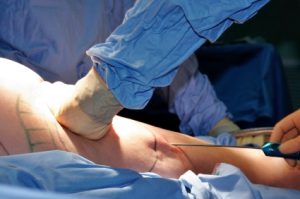 No matter what liposuction technique is used or in what setting or circumstances that it is done, the same three basic components are involved in doing the procedure. These include tumescent infiltration, fat mobilization and suction extraction. The infusing of a wetting solution into the treatment areas first is known as tumescence or to inflate. This is not a separate liposuction technique, it is a necessary part of every liposuction procedure. This solution mainly helps to prevent bleeding which would very significant if not used. The fat mobilization is where all the new technologies work, using various energy and other methods to move fat out from a more solid block of tissue. Lastly, suction extraction must be done with every liposuction method no matter how the fat is mobilized. This is ultimately how it moves from inside the patient to inside the collection canister in the operating room.
No matter what liposuction technique is used or in what setting or circumstances that it is done, the same three basic components are involved in doing the procedure. These include tumescent infiltration, fat mobilization and suction extraction. The infusing of a wetting solution into the treatment areas first is known as tumescence or to inflate. This is not a separate liposuction technique, it is a necessary part of every liposuction procedure. This solution mainly helps to prevent bleeding which would very significant if not used. The fat mobilization is where all the new technologies work, using various energy and other methods to move fat out from a more solid block of tissue. Lastly, suction extraction must be done with every liposuction method no matter how the fat is mobilized. This is ultimately how it moves from inside the patient to inside the collection canister in the operating room.
Types of Liposuction
In days gone by, liposuction was done by simple vacuum extraction. But liposuction has come a long way in the past twenty years and over half a dozen different types of liposuction are now available. Between the new liposuction technologies and the promotion and advertising for them, it can be very confusing for patients.
Smartlipo (Laser-Assisted Liposuction)
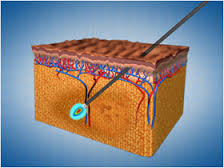 One of the well known and effective liposuction methods is laser liposuction, better known by its brand name Smartlipo. The use of laser-assisted liposuction (SmartLipo) is known for its improved ability to remove fat and tighten skin. SmartLipo is an established liposuction technique that offers some benefits over traditional liposuction methods. SmartLipo is not a cosmetic fat removal fad or a sham procedure based on marketing hype. It is a real invasive surgical procedure that was approved by the Food and Drug Administration of the United States FDA in 2007. The fact that it is an FDA-approved procedure indicates that the concept had to be evaluated in many patients and had to demonstrate that it was both safe and effective. It is based on years of scientific research and experience.
One of the well known and effective liposuction methods is laser liposuction, better known by its brand name Smartlipo. The use of laser-assisted liposuction (SmartLipo) is known for its improved ability to remove fat and tighten skin. SmartLipo is an established liposuction technique that offers some benefits over traditional liposuction methods. SmartLipo is not a cosmetic fat removal fad or a sham procedure based on marketing hype. It is a real invasive surgical procedure that was approved by the Food and Drug Administration of the United States FDA in 2007. The fact that it is an FDA-approved procedure indicates that the concept had to be evaluated in many patients and had to demonstrate that it was both safe and effective. It is based on years of scientific research and experience.
Through an inserted fiber optic cable, laser light is introduced to melt fat cells. After melting, the liquefied fat can then be suctioned out or the liquid fat can be left to be removed naturally through the body’s lymphatic system. By melting fat with a small laser light, the fat is removed with less trauma to the tissues which lessens the severity of the procedure. There is a general consensus that it is less painful than traditional liposuction. An additional benefit is the effect of heat on the overlying skin. For the first time, liposuction results do not have to depend exclusively on the patient’s skin and its ability to contract on its own. The different wavelengths of the laser can help tighten loosen skin and possibly improve the appearance of cellulite as well.
Power-Assisted Liposuction
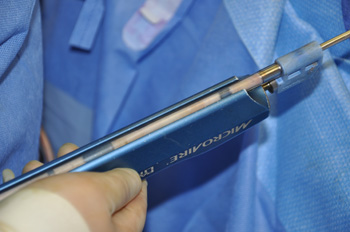 Another very effective form of liposuction is known as power-assisted liposuction. (PAL) This is a mechanized system where the tip of the cannula oscillates back and forth at the tip several thousands of time a minute. This motion helps break up the fat so it can more easily be suctioned out. It makes the liposuction process more effective an requires less physical effort on the part of the surgeon. Of all the energy-driven liposuction technologies, PAL is the best one to use when the extracted fat is going to be processed for fat injection back into the patient.
Another very effective form of liposuction is known as power-assisted liposuction. (PAL) This is a mechanized system where the tip of the cannula oscillates back and forth at the tip several thousands of time a minute. This motion helps break up the fat so it can more easily be suctioned out. It makes the liposuction process more effective an requires less physical effort on the part of the surgeon. Of all the energy-driven liposuction technologies, PAL is the best one to use when the extracted fat is going to be processed for fat injection back into the patient.
LipoDissolve and Kybella Injections
LipoDissolve therapy as an extension of mesotherapy has been around for over a fifteen years as a method of small volume fat reduction for carefully selected patients with very small fat area concerns. It is a compounding pharmacy mixture of phosphatidycholine and deoxycholic acid. (non-FDA approved) LipoDissolve is an office-based procedure in which a series of injections are performed on the undesired fat area. Unlike surgery, LipoDissolve is a process that takes about 120 to 180 days in which to see the final result. For very small areas of diet and exercise-resistant fat, LipoDissolve can be an excellent treatment option that does not require surgery or a recovery period. It does require a series of three treatment sessions over four months to obtain the best result.
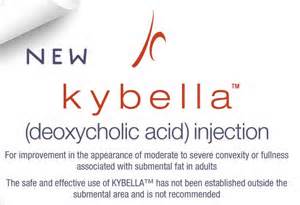 As of 2015, a proprietary formulation of deoxycholic acid has become available for clinical use known as Kybella (Kythera Pharmaceuticals, CA). It has been specifically studied and FDA-approved for submental fat reduction (double chin correction). Since it is the active ingredient of the historic Lipodissolve injections, how it works and what to expect after the treatments are the same. There will be a week of swelling after the injections and it will take four to six treatments to see maximal fat reduction. Treatments are spaced a month apart to give fat that has been lysed time to be absorbed. As an FDA-approved injectable method of fat reduction, Kybella will be the replacement for compounding pharmacy fat-dissolving injectable solutions. Kybella will undoubtably be used ‘off-label’ for other body areas other than the neck that need small amounts of fat reduction.
As of 2015, a proprietary formulation of deoxycholic acid has become available for clinical use known as Kybella (Kythera Pharmaceuticals, CA). It has been specifically studied and FDA-approved for submental fat reduction (double chin correction). Since it is the active ingredient of the historic Lipodissolve injections, how it works and what to expect after the treatments are the same. There will be a week of swelling after the injections and it will take four to six treatments to see maximal fat reduction. Treatments are spaced a month apart to give fat that has been lysed time to be absorbed. As an FDA-approved injectable method of fat reduction, Kybella will be the replacement for compounding pharmacy fat-dissolving injectable solutions. Kybella will undoubtably be used ‘off-label’ for other body areas other than the neck that need small amounts of fat reduction.
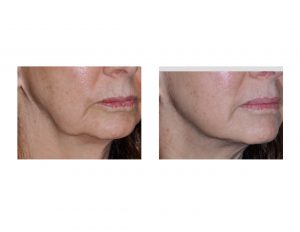 For areas such as the neck and jowls, Kybella injections can produce non-surgical face and neck contouring changes. While not a substitute for the results of surgery such as a lower facelift or small cannula liposuction, visible improvement in facial contours can be achieved.
For areas such as the neck and jowls, Kybella injections can produce non-surgical face and neck contouring changes. While not a substitute for the results of surgery such as a lower facelift or small cannula liposuction, visible improvement in facial contours can be achieved.
Facial Liposuction
While the face is small in comparison to the body, it does have fat in specific areas that can be removed to help with facial reshaping. This almost always means creating a thinner or more shapely face. Because of the numerous branches of the facial nerve, facial liposuction must be done more judiciously and only in selective areas to avoid injury to these small nerve branches.
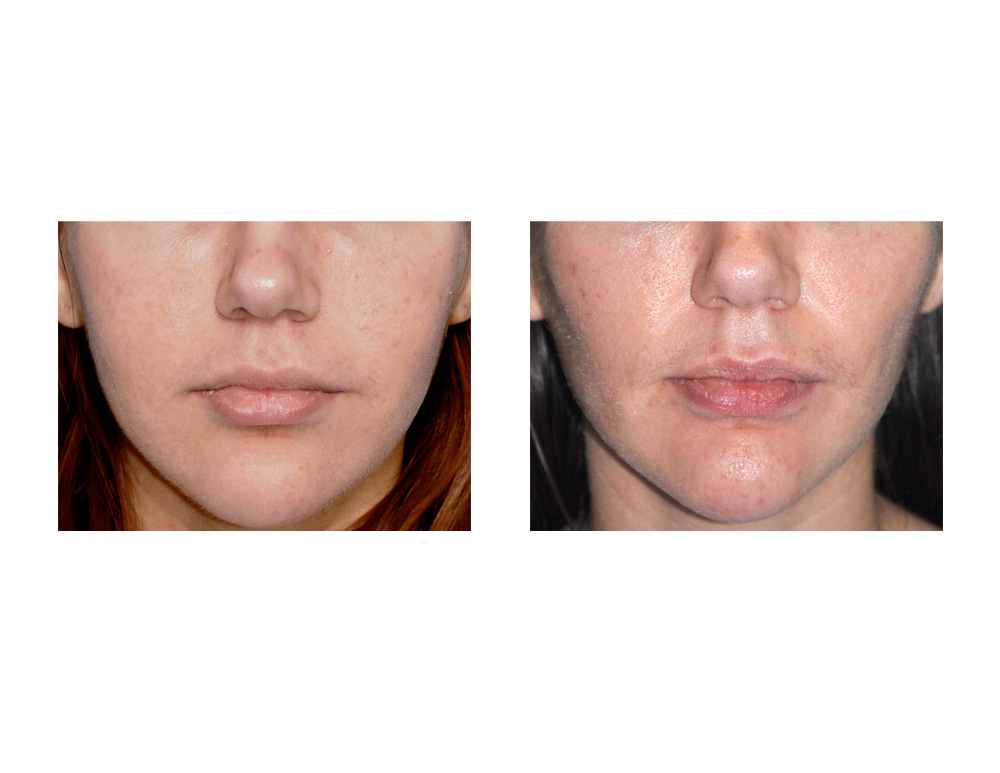 The specific facial fat areas that can removed/reduced include the buccal, perioral mound and neck areas. Buccal fat is best removed by an open approach known as buccal lipectomies done from an incision inside the mouth. However, all other facial fat areas require the use of small cannula liposuction done from incisions inside the corners of the mouth (cheek and perioral mound) and on the underside of the chin (neck).
The specific facial fat areas that can removed/reduced include the buccal, perioral mound and neck areas. Buccal fat is best removed by an open approach known as buccal lipectomies done from an incision inside the mouth. However, all other facial fat areas require the use of small cannula liposuction done from incisions inside the corners of the mouth (cheek and perioral mound) and on the underside of the chin (neck).
Male Liposuction
While more women than men undergo liposuction, it is still a popular male body contouring procedure. Liposuction in men, however, is usually limited to the chest, abdomen and flanks of the body and the neck of the face. By far abdominal and love handle areas are the most commonly requested by men. Selection for abdominal liposuction must be done carefully since men have a higher percent of intra-abdominal fat that accounts for their stomach fullness/roundness.
Male Abdominal Etching
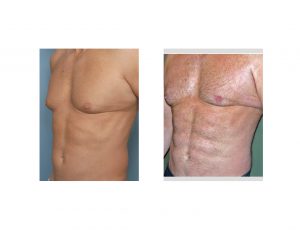
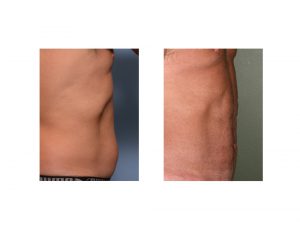 A specialized form of liposuction, done exclusively in men, is that of abdominal and pectoral etching. By removing select linear areas of fat and striving to achieve skin indentations (which is the opposite of what one is normally trying to do in liposuction) a so called ‘six pack abs’ can be created. This is usually best done in thinner men who do not have a thick layer of fat on their abdomens. The liposuction etching can be extended to the chest as well to create a more defined pectorals muscle outline.
A specialized form of liposuction, done exclusively in men, is that of abdominal and pectoral etching. By removing select linear areas of fat and striving to achieve skin indentations (which is the opposite of what one is normally trying to do in liposuction) a so called ‘six pack abs’ can be created. This is usually best done in thinner men who do not have a thick layer of fat on their abdomens. The liposuction etching can be extended to the chest as well to create a more defined pectorals muscle outline.
Dr. Eppley is dedicated to helping his patients achieve their desired body contour. In addition to offering SmartLipo liposuction, he also assists tummy tuck and fat grafting patients with their aesthetic needs to help achieve a more attractive body shape.
Liposuction/SmartLipo – Before Surgery
A thorough medical history is initially taken to ensure that the patient is physically capable of tolerating the potential fluid infiltration and loss that may occur during the liposuction procedure. The areas of fat collections and the quality of the overlying skin is carefully assessed to determine the amount of fat that is to be removed and whether the overlying skin can adequately contract after fat removal. Based on the amount of fat which is to be removed, Dr. Eppley will help you decide if the procedure is best done under local, sedation, or general anesthesia.
Any patient with areas of excessive fat collections can be treated. This includes the facial area (neck, chin, and jowls) as well as numerous body areas (hips, thighs, buttocks, knees, abdomen, waistline, chest, breasts, and arms). This also includes certain benign (non-cancerous) growths or tumors such as lipomas (fatty tumors) or gynecomastia (enlarged breasts in men).
Medications that contain aspirin are to be avoided two weeks prior to surgery to avoid the risk of excessive bleeding either during or after surgery.
Immediately prior to surgery, all of the facial and body areas to be suctioned will be outlined with a surgical marking pen to make sure what had been discussed to be treated will not be missed during surgery.
With in-office LipoDissolve therapy, we recommend that patients apply a topical numbing cream one hour prior to treatment. This can be purchased prior to the day of surgery from the office. Apply the cream and then cover it with saran wrap to ensure that it penetrates your skin rather than your clothes.
Liposuction/SmartLipo – Operation
Liposuction is almost always performed as an outpatient procedure in a surgical center setting. Dependent upon the number of areas to be treated and the amount of fat to be removed, it may be done under either general anesthesia, IV sedation, or local anesthesia. The most important aspect of anesthesia is patient comfort. The type of anesthesia used does not influence the final result.
The procedure is performed by making very small (mm or less) incisions in well-disguised natural skin areas around the area to be suctioned. A large amount of a very dilute local anesthetic with epinephrine (to constrict blood vessels and cut down on the amount of bleeding) solution is initially infiltrated into the suctioned areas (tumescent technique). With SmartLipo, a small fiber optic cable is inserted through which the laser light is introduced. This generates a path of heat which melts the fat and helps tighten the overlying skin. Loose fat liquid is then suctioned out after adequate melting has been done. The amount of fat removed is determined both by feel (pinching the skin) and a knowledge of the preoperative examination. After adequate fat is removed, the small incisions are then closed and a compression garment is applied either alone or over the top of special foam sponges. The procedure may take 30 minutes to three hours to complete dependent upon how many areas are suctioned.
The amount of fat removed in a single treatment session of liposuction depends on the volume of fat present and the extent of recovery that the patient is willing to undergo. Average volumes of liposuction are usually five liters or less in a single procedure. When done at this amount, the procedure can be performed as an outpatient. High-volume (greater than 5 liters) fat removal involves the administration of large volumes of fluid, extended operative times, and significant fluid shifts after surgery. When this amount of fat is removed, the patient should be observed overnight with the administration of IV fluids and pain control. Recovery is going to be much longer in these procedures and the risks associated with liposuction (infection, blood clots, fat emboli) also increase.
With in-office LipoDissolve or Kybella injection therapy, the areas to be treated are marked and then injected with a very small needle. Each treated area requires a small injection every inch so that an average treatment session may require 25 – 100 injections dependent upon the size of the area to be treated. Redness and some swelling begins immediately after the injection session is completed. This will go away within one week after treatment.
Liposuction Recovery
The patient is discharged after adequately recovering from anesthesia. The foam dressings are removed after two days and the compression garment is worn for an additional one to two weeks dependent upon the areas suctioned and the amount of fat removed. Pain is usually moderate and the amount of bruising varies considerably amongst individual patients. Swelling is nearly resolved in two to three weeks and some settling of the suctioned area will continue for several months. Most complications from liposuction are minor and include a temporary numbness of the overlying skin in areas suctioned, an irregular or uneven (waviness) skin surface, and under- or over-resected fat areas. Provided one’s weight remains stable, the results may be very long-term. Serious complications from liposuction, while rare, can occur and are more likely in high volume fat removal. These may include infection, blood clots in the calf, and fat or blood emboli to the lungs. After LipoDissolve treatments, considerable swelling of the treated areas can be expected. This is normal but usually the treated area will double in size. This goes away in a week and some results can begin to be seen about three to four weeks after treatment. It is important to complete the series of three treatments to see the best results.

North Meridian Medical Building
Address:
12188-A North Meridian St.
Suite 310
Carmel, IN 46032
Contact Us:
Phone: (317) 706-4444
WhatsApp: (317) 941-8237
